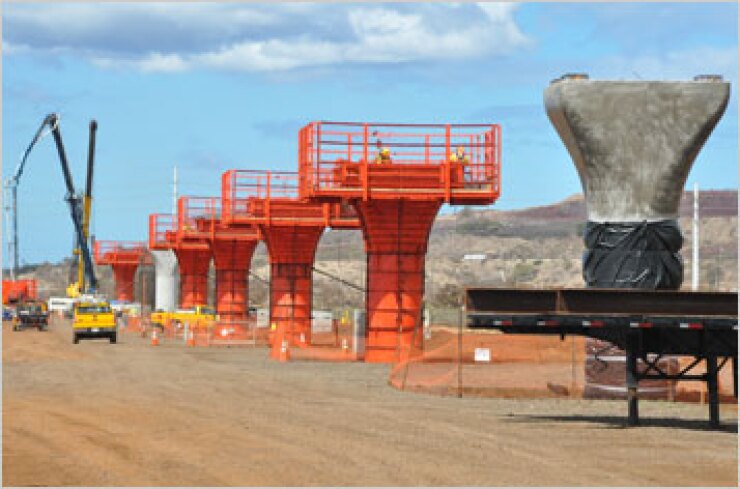
LOS ANGELES — Honolulu officials have filed a notice of compliance with a federal judge saying they have met the additional environmental requirements for the city's $5.3 billion elevated rail project outlined in the judge's December 2012 order.
The 20-mile rail project has been the subject of several environmental lawsuits from rail opponents that have slowed the project.
In a November 2012 split-decision ruling, U.S. District Court Judge A. Wallace Tashima approved the city continuing work on the first three phases of the 20-mile rail line, but said he wanted further environmental reviews conducted before work could begin on the fourth phase near downtown Honolulu.
Tashima ordered city officials to more thoroughly evaluate the impacts to Native Hawaiian burials sites and Mother Waldron Park in Kakaako, explain why a tunnel under Beretania Street wasn't considered as an alternative route, and identify burial sites on the route.
The decision allowed the city to do engineering work and other pre-construction activities on the final phase, but halted construction and real estate acquisitions for that phase.
In the nearly 800-page response to the judge's concerns Honolulu filed Tuesday, city officials said Mother Waldron Park won't be negatively impacted, a tunnel project is not feasible, and no additional traditional cultural properties were identified.
The plaintiffs, who include former Gov. Ben Cayetano, have 30 days to respond to the city's recent court filing.
If they disagree with the judge's ruling, yet to come, they could also challenge the decision in the 9th U.S. Circuit Court of Appeals.
They already filed an appeal that was heard by a three-judge panel on Aug. 15 in San Francisco. The appellate judges postponed a decision at that time until after the city had a chance to respond to issues raised in Tashima's ruling.
The appeal was brought by Cayetano, University of Hawaii law professor Randy Roth, retired judge Walter Heen and long-time rail opponent Cliff Slater.
The main issue was whether the Federal Transit Administration erred when approving the elevated rail system because other alternatives were not properly considered.
Construction just resumed on the project Sept. 15 following a year's delay after rail officials completed an environmental review required through a Hawaii Supreme Court ruling.
The Hawaii Supreme Court had forced the city last year to halt construction on rail until it completed an archaeological inventory survey along the entire 20-mile line to make sure it wouldn't be too disruptive to Native Hawaiian burials.





